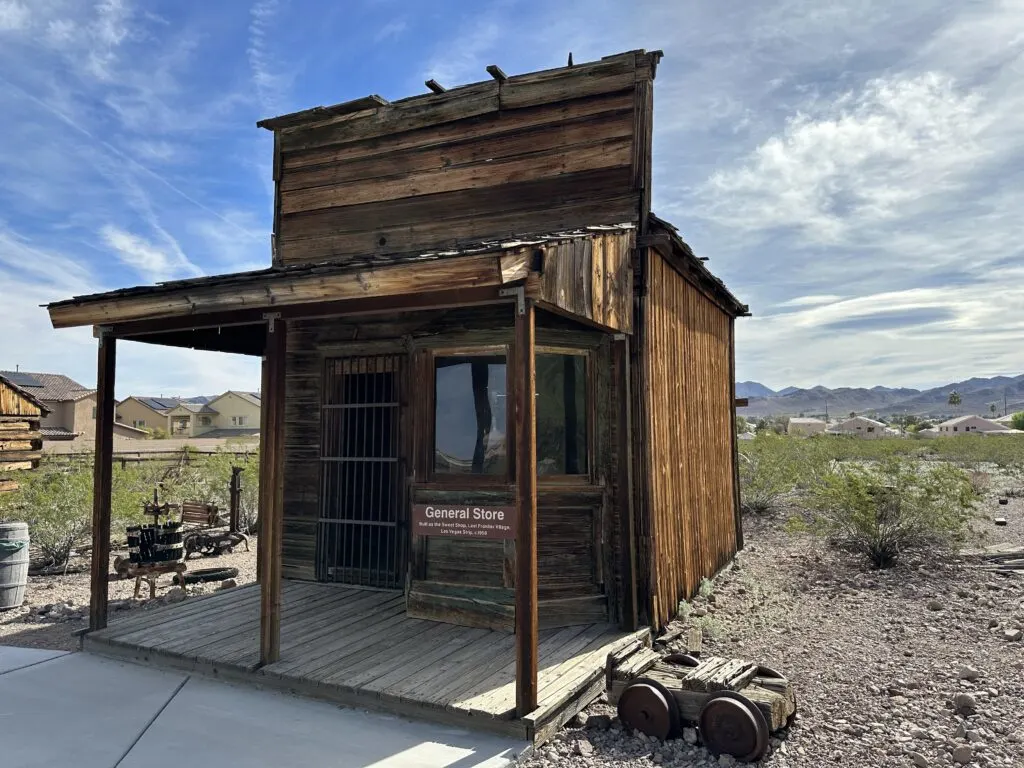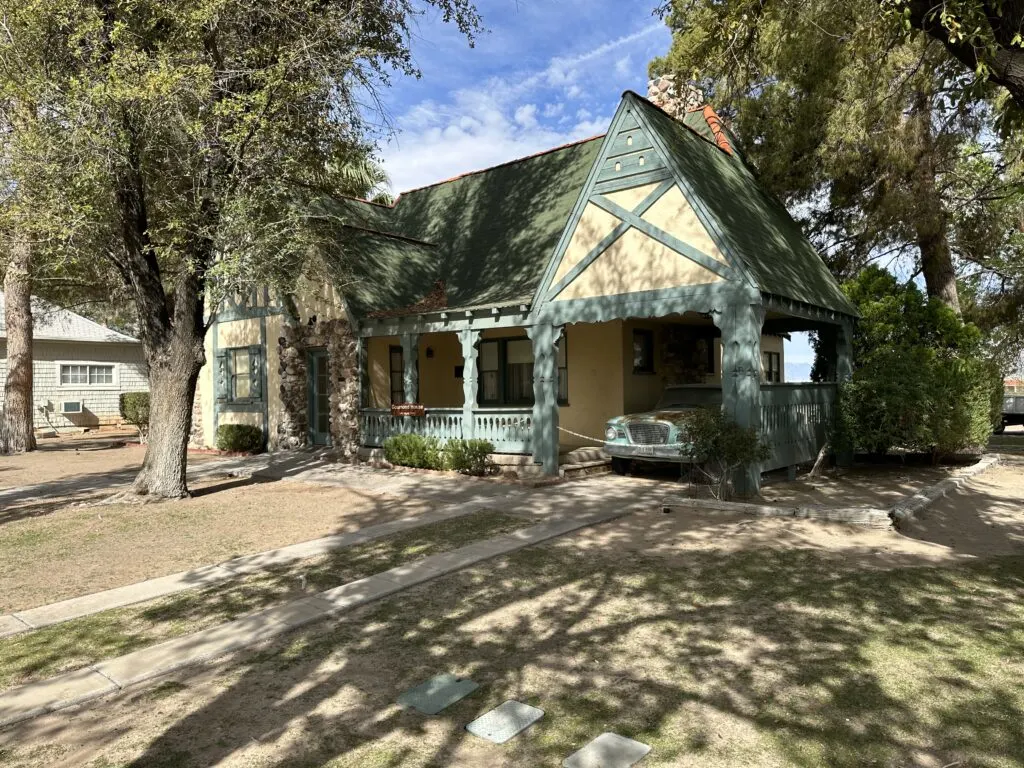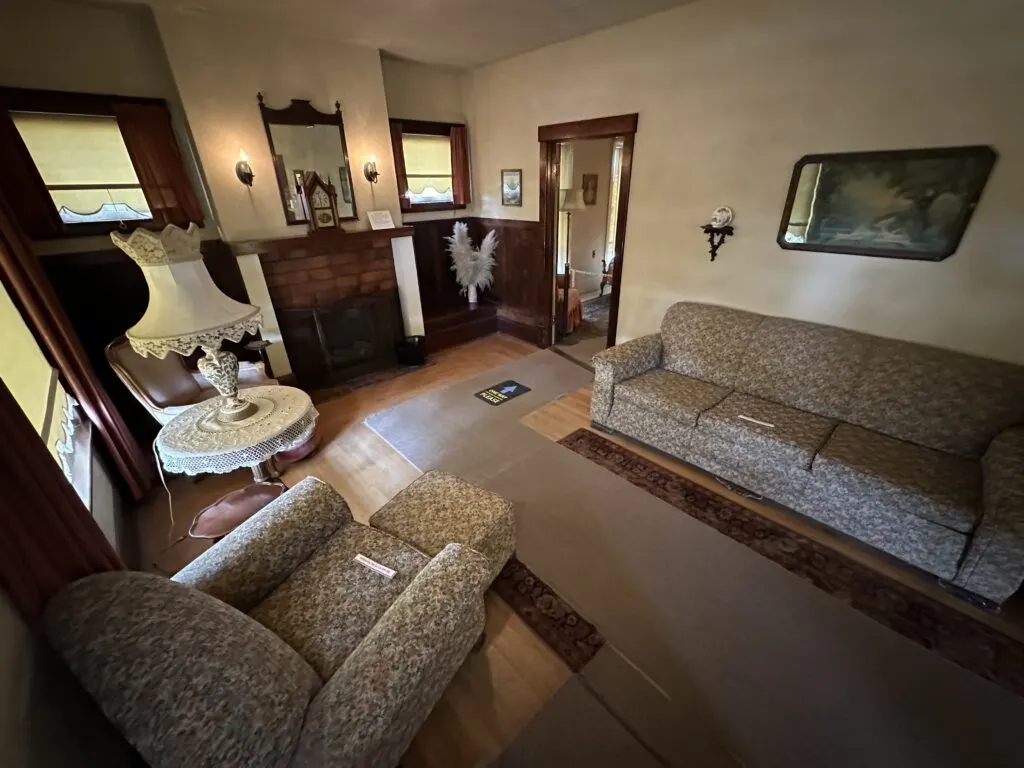Key Points:
- Costing just $2 per person, the Clark County Museum is one of the best bangs for your buck in Las Vegas.
- Unfortunately, the museum is a ways from the Strip, taking 30 minutes to get there by car.
- The premier exhibit is Heritage Street, a collection of homes and businesses that can be explored and are staged to look like the era they’re from.
The Clark County Museum is located 30 minutes from resorts on the Strip by car and packs an educational punch.
If you’re anything like me, the reason you’re aware of the museum’s existence in the first place is because of their celebrity administrator, Mark Hall-Patton, aka the “Beard of Knowledge” made famous by his role on the History Channel show “Pawn Stars”.
While Mark Hall-Patton has since retired, the museum lives on and offers some unique exhibits not found elsewhere.
Exhibits throughout the museum provide visitors with an education on the history of southern Nevada that spans from the ice age and the area’s indigenous roots to today.
I figured it would be fun to swing by to check things out with the intent of sharing my experience with you. Of course, I snapped plenty of pictures to help you determine if the Clark County Museum is worth a visit!
My Experience at the Clark County Museum
Let me first say that the Clark County Museum is easily one of the cheapest things to do in (well, near) Vegas at a mere $2 per person (kids and seniors are only $1).
I wanted to hit the museum first thing in the morning so that I had time to visit Ethel M’s Chocolate Factory that afternoon on my way back to the Strip, and walked in at 9 am sharp.
After handing over 2 crisp $1 bills, I was provided a map by an employee who also explained the lay of the land.
Indoor Exhibit Hall
The first stop at the museum is the Anna Robert Parks Exhibit Hall, which documents the history of southern Nevada from the Ice Age through today.
The subject matter touches on how the region was once a vast ocean, southern Nevada’s indigenous roots, pioneers, the area’s mining history, and how Las Vegas came to be the entertainment capital of the world.

While everything was interesting, the degenerate in me really enjoyed the historic casino memorabilia and gaming equipment.


Ghost Town & Mining Trail
After checking out the indoor portion of the museum, it was time to head outside and walk through the ghost town and mining history trail.
Structures in the ghost town are from various locations and were built anywhere from the late 1800s to the 1950s.
The historic structures were part of a collection that spent time at the Last Frontier Hotel & Casino, and then at Gold Strike Hotel & Casino before being donated to the museum, where they are maintained in a state of “arrested decay”.
Complete with a cemetery, jail, general store, and more, I was able to stand there in the desert sun and almost imagine how challenging life would’ve been.





The mining section of the trail features numerous pieces of equipment, structures, and vehicles strewn about with placards to explain their significance.




Along the trail are also Paiute shelters, which pay tribute to the area’s indigenous roots.

Heritage Street
While I found the Clark County Museum interesting up to this point, Heritage Street was, hands down, the coolest, most interesting part of my visit.
Heritage Street is a collection of historic homes, businesses, and other structures that were built at various times in the 1900s. They’ve been donated, moved, and are now maintained by the Clark County Museum. These aren’t re-creations. They’re the real thing.
The homes and businesses are set up along a tree-lined boulevard that resembles a 1950s neighborhood, are unlocked, and are able to be explored.



Each home and building is akin to a movie set, staged with furniture, decor, appliances, and artifacts from the time period that the structure was in use.
Stepping through a door was like traveling back in time. A surreal feeling.


As the museum’s first visitor, I was all alone on Heritage Street and almost felt like an intruder walking into the houses. Most had the radio playing and realistic mannequins that were engaged in day-to-day activities like eating, relaxing, or making a meal.

The most jarring “intruder” sensation I got was experienced when walking into the church to find an entire congregation staring at me.


In addition to displaying what life at home looked like at various points in time, each home and business had a vast amount of information about the structure itself, the people that lived/worked there, and what was going on in Las Vegas, Clark County, and the nation as a whole during its prime.
Those interested in the subject matter could easily spend an hour or more exploring everything that Heritage Street has to offer.
I don’t say this lightly – Heritage Street was one of the more entertaining learning experiences that I’ve ever had in a museum setting. Extremely well done, and something that’ll appeal to people of all ages.
Here are a few more pictures I took along Heritage Street at the Clark County Museum:













Mojave Desert Gardens
Although not a huge draw in and of itself, there is also a walking trail and garden across the street from the main museum building.
The trails are well maintained and are surrounded by desert foliage and the sounds of a nearby water fountain.


The Verdict: Is the Clark County Museum Worth Visiting?
I went into this experience not knowing exactly what to expect and was blown away.
If you’re even remotely into the history of southern Nevada, or history in general, then the Clark County Museum is worth the drive and measly $2 cash outlay.
While I enjoyed the indoor exhibits, ghost town, and mining portions of the experience, I was absolutely enthralled by Heritage Street.
The museum did a phenomenal job of telling the story of the building, the families or businesses that occupied them, and what was going on in Nevada and the United States during the timeframe.
It was so genuinely interesting.
Whether you’re a history nerd (like me) or are looking for something to do with the kids in Las Vegas, I can’t recommend the Clark County Museum enough.
Related Things To Do in Las Vegas:

I’m a former software salesman turned Vegas aficionado. While the craps table is my preferred habitat, I pull myself away to explore new attractions, shows, restaurants, and outdoor activities around Las Vegas with the intent of sharing my experiences.
Ultimately, I just want to help folks plan a better trip and save a few bucks in the process.
